In the Shadow of Detroit’s Bankruptcy, the City’s Private Sector Prospers
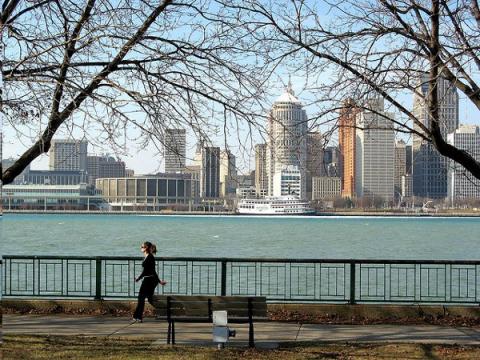
In a city known as “Hockey Town,” the Detroit Red Wings haven’t missed the playoffs since the 1989-1990 NHL season, a record-breaking statistic that is highly touted amongst any true Wings fan. The record seemed in danger throughout the inconsistent 2012-2013 season, but every Red Wings fan was rewarded for their dedication when the team they love won key games down the stretch to secure a 7th seeded playoff berth. The Wings concluded one more season playing at the Joe Louis Arena when they lost in 7 games to the Chicago Blackhawks, the eventual Stanley Cup winners, in the second round of the playoffs. “The Joe,” as it is affectionately referred to, has been the home of the Red Wings since 1979, and it is now living out its final years. The stadium is declining if not already able to be considered decayed, which is why in 2009 the Red Wings Organization chose not to renew their 30-year lease but instead to seek out a new arena.
The Birth of The Joe follows the outline of most things in Detroit. The Red Wings storied franchise played from 1929 on at Olympia stadium, which was located in an increasingly deteriorating and dangerous neighborhood after the crippling 1967 Detroit riots; considered the largest riots ever behind the NYC draft riots during the Civil War and the 1992 Los Angeles riots. Following the murder of two people right outside of Olympia Stadium, the Wings threatened to leave the Detroit city limits altogether, but were convinced to stay by Detroit’s Mayor, Coleman Young, after he offered to build a brand new stadium on the river front which would eventually become The Joe Louis Arena.
During the Wings’ tenure at The Joe the team has not only held a record of 22 straight playoff seasons, but they have also appeared in six Stanley Cup Finals, winning four of them. Yet it is time to move on, and Detroit’s downtown development arm approved a plan for a multipurpose arena and entertainment district that will cost 650 million dollars. The Red Wings will play in this new revitalized district that will also include retail, office and residential space, a hotel and parking buildings. For a city that just filed the largest municipality bankruptcy in American economic history, an investment of this kind is huge.
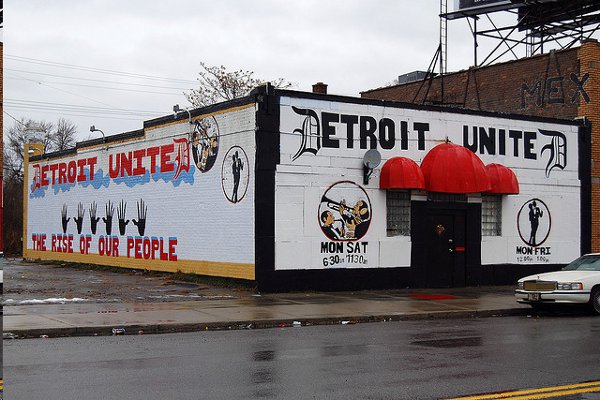
According to the Wall Street Journal, “The total bill for the city's long-term liabilities is nearly $20 billion, and the city is now insolvent [.]” With 20 billion in debt, a shrinking population base barely holding on to 700,000 residents in a city planned for 1.5 million people, reinvention is the only move forward. The city must revitalize, diversify from its historical dependence on the auto industry, and support development of variegated private sector growth. Large-scale projects like this newly proposed downtown development will surely create more jobs and increase tax revenues.
However, many wonder who will foot the bill for this new entertainment district. According to the Detroit News, “The public, through an economic development fund, will pay $283 million toward the project, and $367 million will come from private funding sources — a 44-56 percent split. But officials emphasized there will be no new taxes, and the money won’t come out of the city’s battered coffers.” However there is a large disconnect in the previous statement since the money from the public fund being used for this new downtown development would otherwise be going to the public schools. The AP reported that, “The authority has been allowed for nearly two decades to finance economic stimulus projects by selling revenue bonds to be paid off with the tax money. It takes in about $12.8 million a year that otherwise would have gone into a fund for public schools statewide.”
Opponents of the new downtown development argue that funding a private stadium for the Detroit Red Wings with public money that would otherwise go to the public school system is ludicrous, especially when local schools are so far below national averages across all metrics for educational systems. Dan Rather, in a special documentary report from last year called the Detroit Public School system “a disgrace,” and went further by saying that the district is plagued by “below average graduation rates, historically low standardized test scores, rapidly declining enrollment and a deficit that has grown from $200 million to $327 million since the state took over the district two years ago.” The documentary as a whole is troubling; Rather even describes how teachers routinely don’t show up to teach their own classes. From this bankrupt and failing school system the Downtown Development Fund will divert money, and instead pay the large cost of the continued revitalization of downtown Detroit. The fight of private growth vs. public needs in a city where both sectors have been in decline for decades has no easy solution. In many ways this is the story of Detroit, a plethora of problems that have no quick fix and the teeter totter motion of attempting to fix one problem while another suffers.
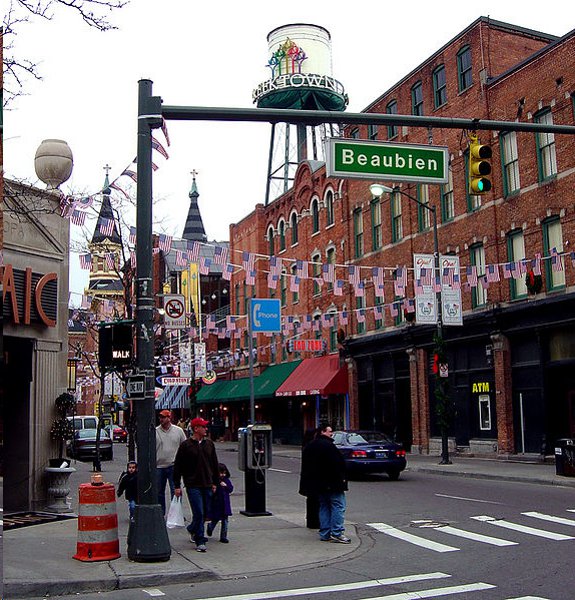
It is difficult to blame the city of Detroit for attempting to revitalize the city through the private sector, even at the permitted expense of the public school system. Detroit has problems across the board; The New York Times described Detroit with the following declaration, “Detroit may be the most extreme example of a city’s dual fates, public and private, diverging.” There is a large disconnect occurring between large-scale private-sector investment and success, while the public sphere dominates the news with bankruptcy and city blight.
Publicly, Detroit is a city with upwards of 70,000 abandoned properties and no real solution for what to do with them. Residents report that calling 911 during an emergency is almost useless since the average 911-response time is over an hour, which is a large factor in why only half of Detroit property owners actually pay their local taxes. In an interview with The Detroit News, a local Detroit resident questioned, “‘Why pay taxes?’ who owes more than $2,600 on his home on an east-side block where five owners paid 2011 taxes. ‘Why should I send them taxes when they aren't supplying services? It is sickening. … Every time I see the tax bill come, I think about the times we called and nobody came.’”
The crime rate in Detroit gives the city the dubious honor of being nationally ranked as the second most dangerous city in America (behind Flint, Michigan). Criminals are surely assisted by a stripped-down police force, and a city where 40 percent of the 88,000 street lights are broken. However while these problems fester, the private sector is booming. Dan Gilbert, according to Forbes, has poured billions into private enterprises and buying up nearly 8 million square feet of property to reinvent and revitalize the city. He isn’t alone in this; with property prices at unimaginable lows, investors from across the world have flocked to invest. The New York Times reports that, “Private industry is blooming here, even as the city’s finances have descended into wreckage.” Through local Detroit initiatives and incentives, tech startup companies like TechTown have begun emerging, bringing in young exuberant entrepreneurs into the city. There is also a burgeoning art and music scene that never existed before. Furthermore, it cannot be forgotten that the auto industry, Detroit’s bread and butter for three-quarters of a century, has in many ways bounced back from their earlier bankruptcy troubles.
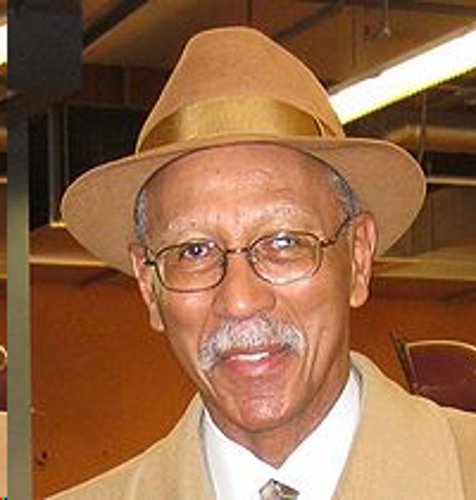
Detroit is a story of what happens when everything has gone wrong. The New York Times describes that “In the eyes of some, the signs of a private sector turnaround have only served to accentuate divisions […] a revived downtown but hollowed-out neighborhoods beyond; an upbeat mood among business leaders even as the city’s frustrated elected officials face diminished, uncertain roles under state supervision.” The private sector turnaround can serve as the foundational base for a resurgent Detroit, only if managed properly and coupled with matching improvements to the public sphere. There are still many great aspects to the city that inspire hope for a comeback. Hopefully if the Detroit Red Wings, the soul of the city, keep winning, then possibly the rest of the city will begin to as well.
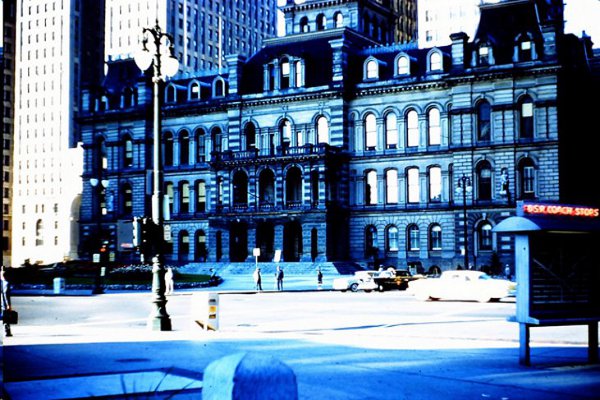
Author Bio:
Alexander Ostrovsky is a contributing writer at Highbrow Magazine.
Photos: Andrea 44 (Flickr); Patricia Drury (Flickr); Wikipedia Commons; All Things Michigan (Flickr).































































































































































































































































































































